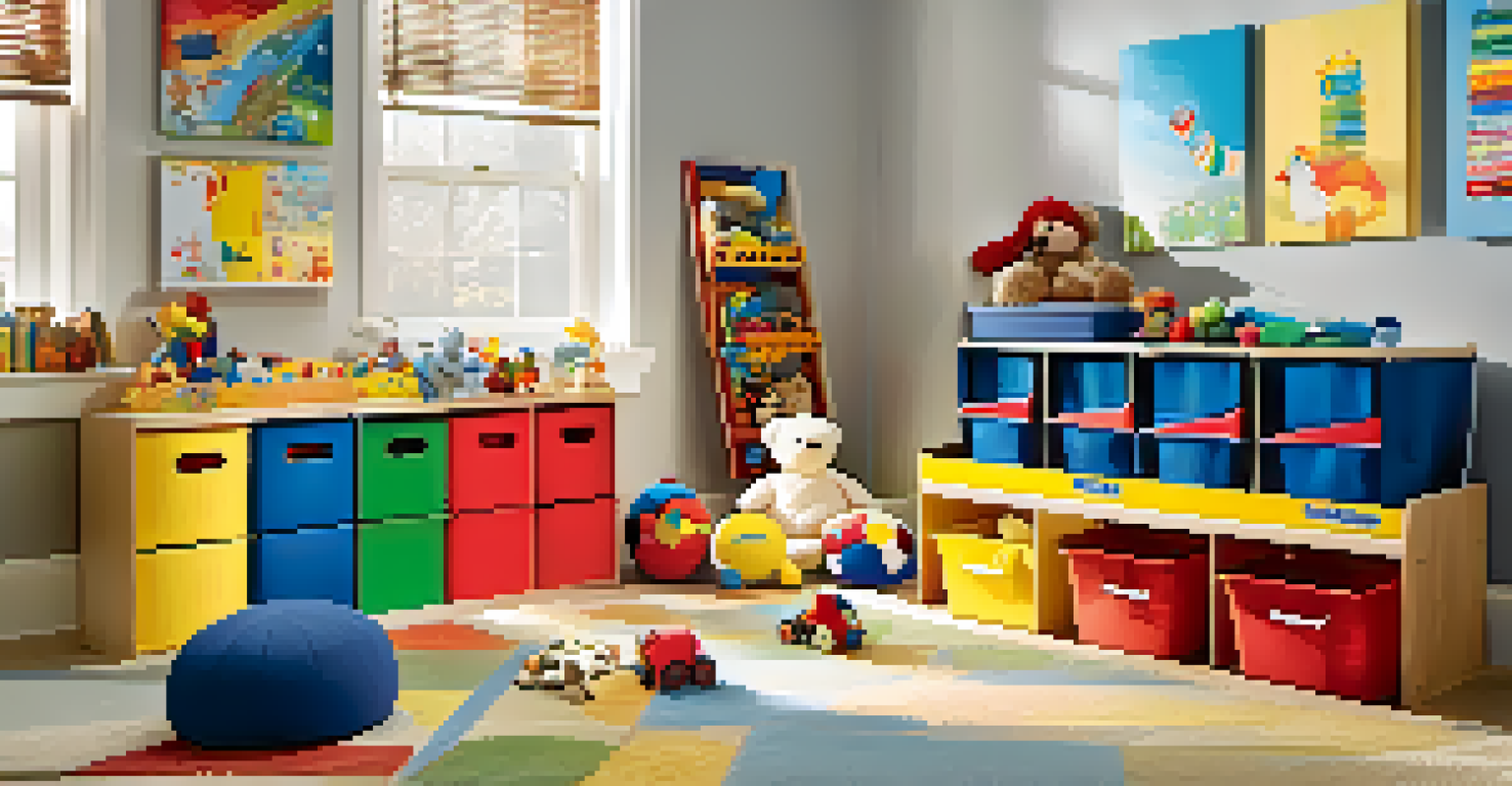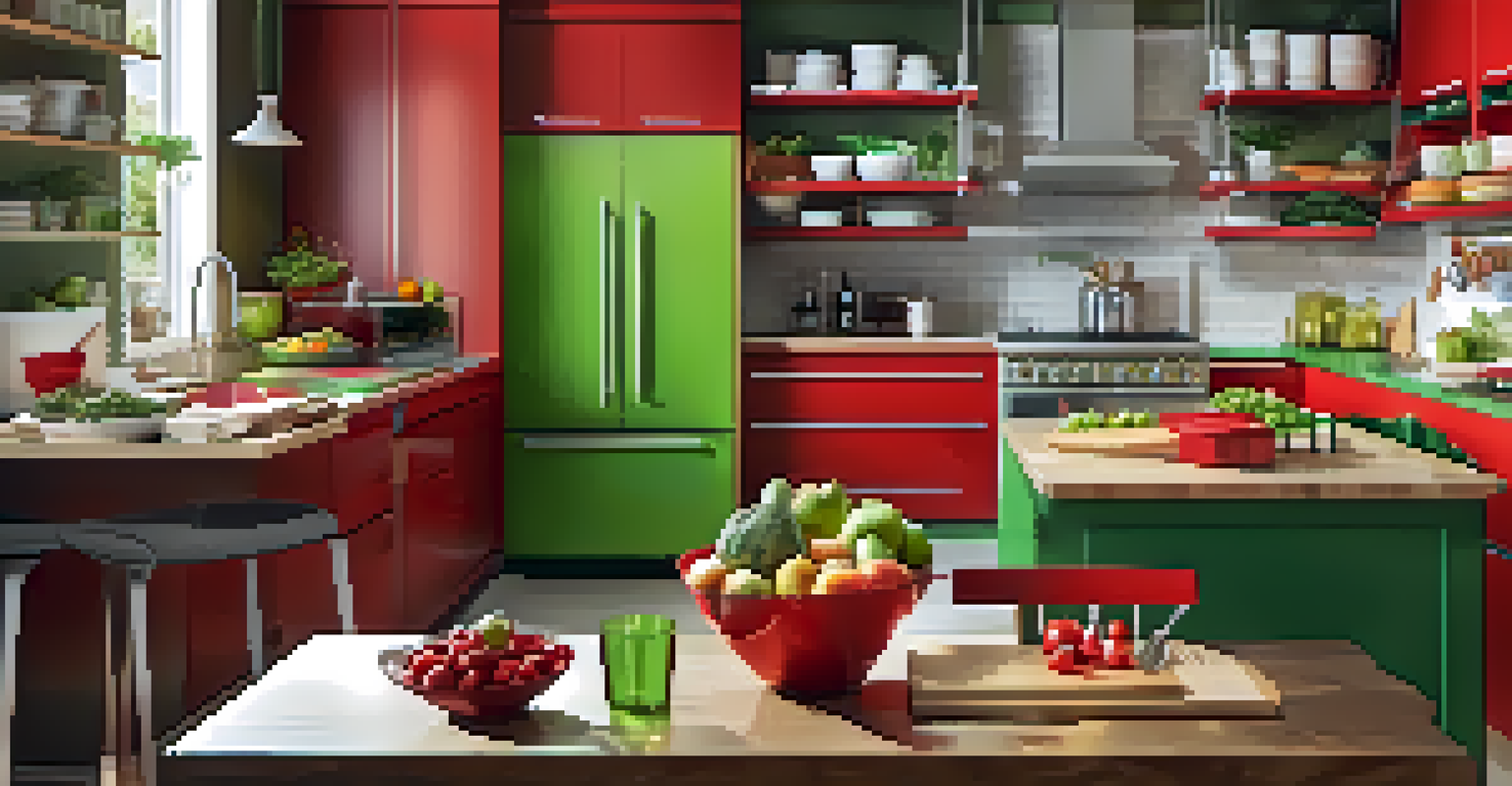The Role of Color Coding in Home Organization

Understanding Color Coding in Home Organization
Color coding is a simple yet powerful tool that can transform how we organize our spaces. By assigning specific colors to different categories of items, we create visual cues that make it easier to locate and manage our belongings. This method isn't just about aesthetics; it's about efficiency and reducing the stress of clutter.
Color is the keyboard, the eyes are the harmonies, the soul is the piano with many strings.
Think of it like a traffic light system: red means stop, green means go. When you use color to categorize your items, you're effectively establishing a system that communicates instantly. For instance, you could use blue for office supplies, green for cleaning products, and yellow for seasonal decor.
This visual system helps you quickly identify where things belong and what needs attention. When you walk into a room and see a rainbow of organized items, it can inspire you to maintain that order, making your home a more pleasant and functional space.
The Psychology Behind Color Choices
Colors evoke emotions and can influence our behavior, which is why choosing the right colors for your organization system is crucial. For example, blue is often associated with calm and focus, making it an excellent choice for a home office area. In contrast, bright red can stimulate energy, which might work well in a playroom.

When selecting colors, consider how each hue makes you feel and how it impacts your daily activities. A well-thought-out color palette can enhance your mood and productivity, turning a chaotic environment into a harmonious one. You want to create spaces that not only look good but also feel good to be in.
Color Coding Simplifies Organization
Using color to categorize items creates visual cues that make it easier to manage belongings and reduce clutter.
Additionally, using colors that resonate with you personally can increase your commitment to maintaining an organized space. If you love the color green, incorporating it into your organization system can make the task of tidying up more enjoyable.
Practical Applications of Color Coding
Implementing color coding in your home can be as simple as using colored bins, labels, or tape. For instance, using a red bin for laundry and a blue one for toys can streamline your cleaning routine. This way, family members know exactly where to put things away, fostering a sense of responsibility.
The more you use your head, the more you can color your world.
You can also apply color coding to your digital life by organizing files on your computer or phone. Creating color-coded folders not only makes it easier to find documents but also helps keep your digital workspace clutter-free. This is especially helpful in a world where we are inundated with information.
For a more advanced approach, you can even color code by priority. Assigning colors to tasks or projects in a planner can help you focus on what needs immediate attention versus what can wait. This method of visual organization can significantly enhance productivity and time management.
Incorporating Color Coding in Different Rooms
Every room in your home can benefit from color coding, whether it's the kitchen, bedroom, or garage. In the kitchen, you might use red for cooking utensils and green for food storage. This not only keeps things organized but also makes meal prep more efficient as you quickly identify what you need.
In children's rooms, color coding can encourage kids to participate in tidying up. Assigning specific colors for different toy categories helps them learn to sort and organize at an early age. It turns cleaning into a fun activity rather than a chore they dread.
Colors Influence Mood and Behavior
Choosing the right colors for your organization system can enhance your mood and productivity, making spaces more enjoyable.
Even in the garage, where chaos can reign, color coding can bring order to tools and equipment. Using bright colors for toolboxes or storage bins can help you quickly locate what you need, making home maintenance a smoother process.
Benefits of Color Coding for Families
Color coding isn't just beneficial for individuals; it's a fantastic way to involve the whole family in home organization. When everyone knows their designated color, it fosters teamwork and accountability. Kids can easily remember their responsibilities, making cleanup a collective effort.
Moreover, having a visual system reduces frustration and confusion. Instead of asking where something is, family members can quickly find items based on their colors. This clarity can alleviate stress and create a more harmonious living environment.
Additionally, color coding can promote communication among family members. For instance, if you assign specific colors for chores, everyone is aware of their tasks, leading to less overlap and more efficient completion of household responsibilities.
Challenges and Solutions in Color Coding
While color coding can be highly effective, it’s not without its challenges. One common issue is the potential for confusion if too many colors are used. To avoid this, it's essential to keep your color palette simple and consistent across the home.
Another challenge can be the initial setup time. It may take some effort to categorize and organize everything by color, but the payoff is well worth it. Consider tackling one room at a time to make the process manageable and less overwhelming.
Family Involvement Boosts Accountability
Color coding engages the whole family in home organization, fostering teamwork and reducing confusion about responsibilities.
Lastly, remember that color coding is not a one-size-fits-all approach. What works for one family may not work for another. Be flexible and willing to adjust your system as needed, ensuring it continues to meet your organizational needs.
Maintaining Your Color Coding System
Once you've established a color coding system, maintaining it is crucial for long-term success. Regular check-ins to assess how well the system is working can help you identify any areas that may need adjustment. This proactive approach will keep your home organized and clutter-free.
Encouraging family members to respect the color coding system is essential. When everyone understands and values the organization method, it becomes ingrained in your daily routines. Consider setting reminders or creating fun challenges to keep everyone engaged.

Lastly, don't hesitate to update your color coding system as your needs evolve. Life changes, and so should your organizational methods. Keeping your system fresh and relevant will ensure that it continues to serve its purpose effectively.